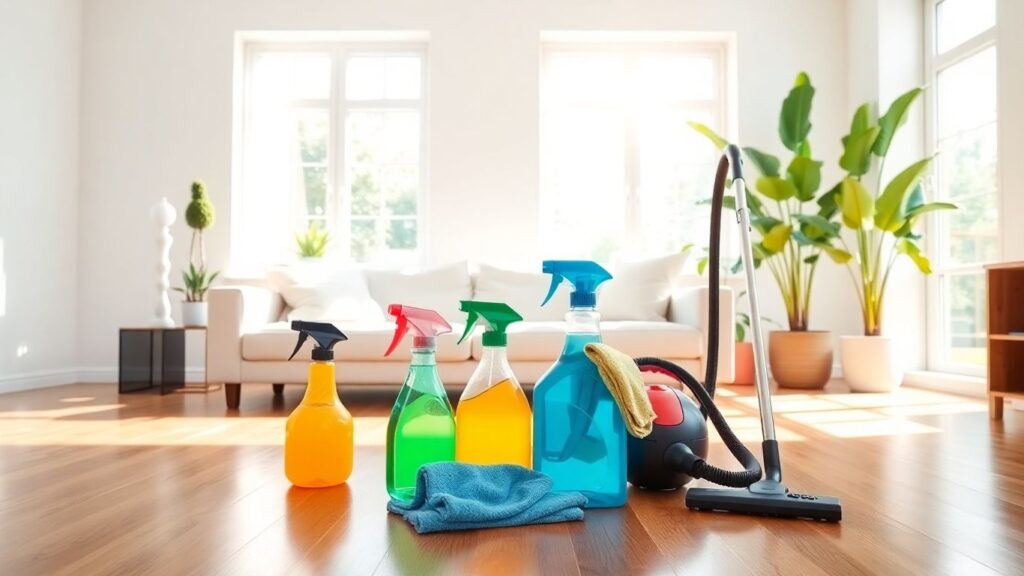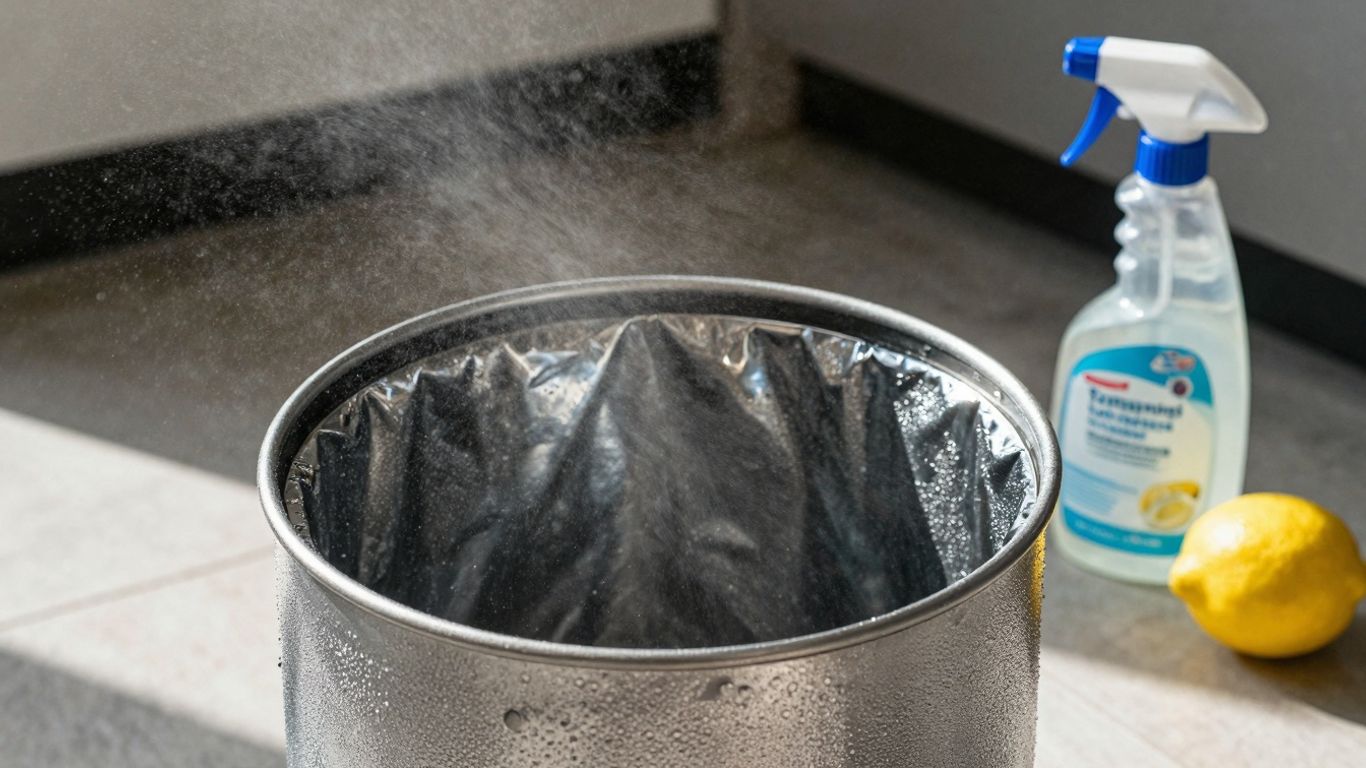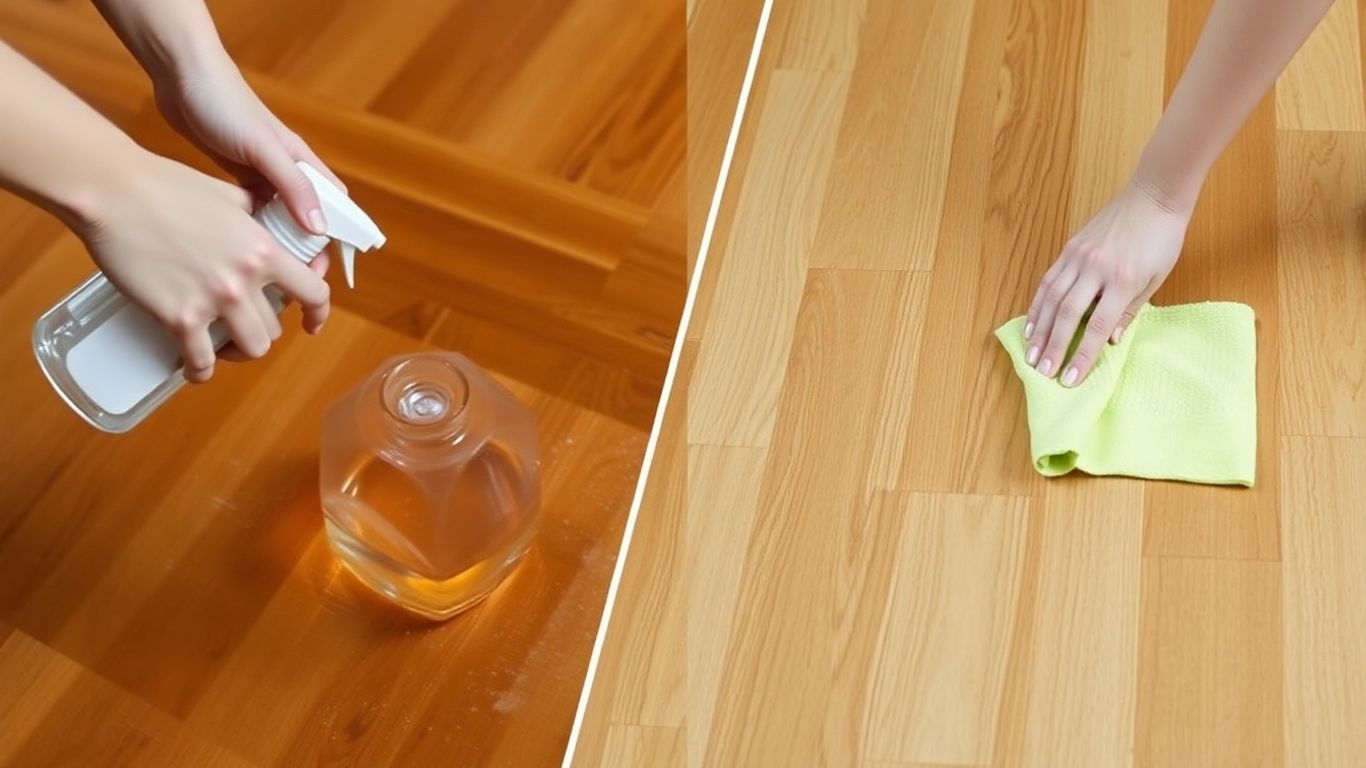Let’s be honest—house cleaning is one of those things that’s always on the to-do list, but it never really ends. You clean the kitchen, and somehow, five minutes later, there’s a new mess. I get it. But keeping your home fresh and spotless doesn’t have to feel impossible. With a few simple habits and the right tools, you can keep the chaos under control. This guide breaks down practical steps for house cleaning, so you can spend less time scrubbing and more time relaxing in a place that actually feels good to come home to.
Key Takeaways
- Stick to a regular house cleaning routine small daily habits make a big difference.
- Declutter before you clean to save time and keep things organized.
- Work from the top of the room down, and go dry before wet for best results.
- Use the right cleaning tools and keep them in good shape.
- Don’t forget easy-to-miss spots like light switches and baseboards.
Setting Up a House Cleaning Routine That Sticks
Coming up with a cleaning schedule that you’ll actually stick to isn’t as tricky as it might feel. Life gets busy, but with some planning (and a bit of trial and error), a routine can become second nature. The sections below break down why a set schedule pays off, how to split up the work, and how to fit everything into your week without giving up your whole Saturday.
Benefits of a Consistent Cleaning Schedule
- Small steps every day keep your home from feeling like a giant mess. You’re less likely to fall behind or feel swamped.
- Cleaning a little at a time saves you from exhausting weekend cleaning marathons.
- Regular cleaning helps fight allergies and keeps germs from spreading.
- When you know what needs to be done and when, it’s easier to share chores with everyone who lives with you.
Building structure into your cleaning will give you more time for the things you enjoy—no more spending an entire afternoon scrubbing baseboards or hunting for a clean shirt.
Breaking Down Chores by Frequency
Some jobs need your attention every day, while others can slide for a week or two. Here’s a basic guide:
| Task | Daily | Weekly | Monthly |
|---|---|---|---|
| Make beds | ✓ | ||
| Do dishes/wipe sinks | ✓ | ||
| Sweep/vacuum floors | ✓ | ✓ (deeper) | |
| Laundry | ✓/as needed | ||
| Clean bathrooms | ✓ | ||
| Dust surfaces | ✓ | ||
| Mop floors | ✓ | ||
| Clean fridge | ✓ | ||
| Wash windows | ✓ |
Organizing chores this way keeps you on track without feeling overwhelmed. Checking off a list (even a mental one) feels surprisingly satisfying.
Choosing the Right Time for Your Routine
- Mornings can be a good time for quick resets (make beds, do the dishes, wipe counters).
- Reserve one evening a week for deeper cleaning, like full bathroom scrubs or dusting.
- Assign certain rooms to certain days—kitchen on Monday, bathrooms Tuesday, and so on.
Other tricks that help people stick to a routine:
- Pair chores with favorite music or a podcast.
- Set reminders on your phone or write chores on a shared calendar.
- Keep cleaning supplies handy where you need them (bathroom cleaners under the sink, wipes in the kitchen).
Adapting your cleaning routine to your schedule (not the other way around) takes the stress out of keeping a fresh home. Find what works for you—if something feels like torture, change it up until it fits better.
Decluttering for a Cleaner, Happier Home
When your home is free of clutter, it’s almost like you can actually breathe easier. Decluttering isn’t just about getting rid of stuff—it’s about making sure that every item in your house has a place and a purpose. A well-organized home just feels calmer, and it’s so much easier to keep clean too.
Sort, Donate, Toss: Declutter Efficiently
Decluttering works best when you break it down step by step:
- Start with one area—closet, kitchen drawer, or even just your coffee table.
- Pull everything out. Get a real look at what you’ve got.
- Sort items into three categories: keep, donate/give away, or toss.
- The keep pile should be for things you actually use or love.
- Donate or give away anything that’s in good shape but doesn’t make sense for your daily life.
- Trash broken or unusable items—don’t hang onto just-in-case junk.
| Category | Examples |
|---|---|
| Keep | Daily-use clothing, cookware |
| Donate/Give | Unused gifts, extra kitchen tools |
| Toss | Broken items, old receipts |
Letting go of old stuff makes more space, and honestly, less to clean week after week. Trust me, once you finish one room, you’ll want to keep going.
Organizing Storage Spaces for Success
After the excess is gone, it’s time to rethink storage to avoid future messes:
- Use baskets, bins, and drawer dividers to keep similar items together.
- Label containers—no more hunting for batteries or pens.
- Store seasonal items out of the way: holiday decor, winter coats, extra bedding. Consider under-bed storage if closets are tight.
A little effort organizing storage means you’ll spend less time shuffling things around later. If you can see what you have, you’re less likely to re-buy or over-stuff.
Maintaining Clutter-Free Zones
The hardest part is actually keeping things tidy once you’ve decluttered. Here’s what helps:
- Make a rule: “One in, one out.” For every new thing you bring home, let go of something else.
- Spend five minutes each night resetting key areas.
- Don’t let things pile up—mail, shoes, toys. Catch clutter early to prevent bigger messes down the line.
Staying clutter-free isn’t magic; it’s just a couple of small habits done every day, or even every week. It’s worth it for the peace and breathing room you’ll feel in your own space.
Top Cleaning Techniques for Every Room
Cleaning isn’t just about wiping surfaces until they look better. The real trick is having a good method for each space—otherwise, you end up putting in way too much effort for not a lot of payoff. Here’s how I keep cleaning manageable by working smart, not just hard.
Work from Top to Bottom, Dry to Wet
Always start cleaning from the highest points, like ceiling fans or shelves—it keeps dust and debris from falling onto already-cleaned surfaces. Here’s my go-to order:
- Dust light fixtures, fan blades, and high shelves.
- Wipe down walls, windows, and furniture.
- Finish with floors: vacuum, sweep, or mop depending on the surface.
For each room, start with dry dusting or vacuuming to grab loose particles, then finish with damp cleaning where it’s needed. This way, nothing is left for you to track around when you mop.
Taking it one step at a time, from top to bottom, really keeps your work from piling up. It also means you aren’t cleaning your floors twice—who has time for that?
Professional Cleaning Order for Best Results
If you want an efficient routine, follow a pro cleaner’s logic. Here’s a good sequence:
- Kitchens and bathrooms first. Germs love these places the most, so knock them out while you have energy.
- Tackle living rooms and bedrooms next. These usually need less scrubbing and more straightening.
- End with hallways and entryways—they collect stuff from every room.
You can break it down this way with daily, weekly, and monthly tasks. Here’s a quick markdown table for ideas:
| Frequency | Task Examples |
|---|---|
| Daily | Wipe counters, sweep high-traffic floors |
| Weekly | Mop, vacuum under furniture, clean mirrors |
| Monthly | Wash windows, deep clean baseboards |
Sticking to an order like this lets you keep a rhythm. It’s simple, but so much more effective than bouncing around at random. For more shortcuts, I sometimes use room-by-room cleaning hacks, especially when life gets busy.
Room-Specific Tips for Kitchens and Bathrooms
Kitchen Tips
- Empty and wipe down counters before washing them.
- Clean appliance fronts—especially the fridge handle—and don’t forget inside the microwave.
- Run the dishwasher empty on hot with a cup of baking soda to kill odors.
- Sweep, then mop, always starting at the far corner and working toward the door.
Bathroom Tips
- Clear out rugs and trash cans before cleaning.
- Spray all-purpose cleaner on shower walls and let it sit. Then scrub with a nylon pad.
- Use glass cleaner on mirrors, but don’t skimp—let it sit for a minute for less streaking.
- Finish with floor mopping and putting back anything you removed.
Living Room & Bedroom Tips
- Declutter first—move out anything that doesn’t belong before you even grab a duster.
- Dust shelves, electronics, and window sills with a slightly damp microfiber cloth.
- Vacuum carpets and below furniture. Don’t forget the area underneath couch cushions and beds.
Don’t overlook these small steps. A regular pattern, the right order, and picking up a few pro tricks along the way make it so much easier to keep your whole house neat.
Daily House Cleaning Habits to Keep Your Home Fresh
Keeping your home fresh doesn’t require an all-day scrub-down. Instead, building a few straightforward habits into your routine makes a noticeable difference. A clean home just feels better at the end of a long day. Let’s walk through practical ways to keep messes at bay daily.
Morning Refresh: Beds, Counters, and Dishes
Starting your day by tidying the most visible spots can set the tone:
- Make your bed right after waking up. It immediately makes the room look tidy.
- Give kitchen counters a quick wipe so you’re greeted by a room that feels ready for the day.
- Load any stray dishes into the dishwasher or wash them. This keeps the sink from piling up.
- Toss dirty clothes into the hamper, not on the floor.
Just five minutes in the morning, and you walk out the door with the house looking like someone cares.
If you’d like even more ideas, check out these ten daily cleaning habits for inspiration.
Quick Evening Tidy-Ups for a Relaxed Space
Evenings are about winding down, but a little effort after dinner can save you stress tomorrow:
- Clear and wipe the kitchen table.
- Put living room items (blankets, remote controls, etc.) back where they belong.
- Sweep or vacuum high-traffic spots—especially near doors or in the kitchen.
- Take out the trash if it’s full, so your morning starts fresh.
A simple habit table for evening chores:
| Task | Usual Time Needed |
|---|---|
| Load last dishes | 5 min |
| Living room tidy | 3 min |
| Sweep kitchen | 3 min |
| Empty trash | 2 min |
Nothing here takes longer than checking your feed, but it prevents messes from becoming overwhelming.
Spot Cleaning for High-Touch Surfaces
Some spots need extra attention because we touch them all day long. Here’s what to look out for:
- Door handles and light switches collect oils and germs. Wiping them down daily keeps things hygienic.
- Bathroom taps, toilet flush levers, and kitchen faucet handles can get grimy fast.
- Phones, remote controls, and fridge handles—these rarely get a break and gather more dirt than you think.
I use a damp microfiber cloth with a bit of all-purpose cleaner. It takes seconds and goes a long way.
By making these small routines automatic, you’ll barely notice you’re cleaning, but your home will always feel guest-ready.
Integrating just these habits can be a game changer. The trick is consistency: even tiny tasks make a huge impact if you do them every day. Your home will look (and feel) fresher for it.
Deep Cleaning Strategies for a Truly Spotless House
Deep cleaning can sound like a huge job, but if you break it up and do it right, your home really does feel sparkling when you’re done. Below you’ll find some friendly, step-by-step advice on making deep cleaning simpler and even (maybe) a bit satisfying when you see the results.
Declutter Before You Deep Clean
Don’t pick up a mop or duster until you clear out the clutter—trust me, it’s worth it. Trying to deep clean around piles of stuff just wastes energy, and you’ll feel less motivated when you see ‘busy’ surfaces. Start in one room, toss or donate items you don’t use, and stow away things that don’t belong.
Here’s a super simple way to handle it:
- Grab three baskets or bags: one for trash, one for donations, and one for stuff that goes elsewhere.
- Walk around the room, filling each as you go.
- Empty bins right away so the clutter doesn’t end up just moving around the house.
Once you see those clear spaces, you’ll notice you’re more motivated to keep going. A tidy surface is secretly one of the best rewards.
How to Deep Clean Floors and Baseboards
When you’re tackling the floors, there’s an easy order to follow:
- Move furniture—use furniture sliders if you’ve got heavy stuff.
- Sweep or vacuum the whole area, focusing on corners and along baseboards.
- For carpets: consider renting a carpet cleaner to pull up all that hidden grime. If you have pets or kids, a quick pass with a lint roller helps grab hair before washing.
- For hardwood and tile, mop with the right solution (never too much water on wood!).
- Wipe baseboards with a warm, slightly soapy cloth. Rinse it out often so you’re not just spreading dust and gunk.
If you want your efforts to last, do this every couple months—not just in spring.
Refreshing Windows, Curtains, and Blinds
Natural light makes any space look better, but it really shows dust and dirt. Sometimes, just washing windows can make your whole place seem cleaner. Here’s how to get it right:
- Vacuum windowsills and tracks before spraying any cleaner.
- Start at the top, spritz windows with your favorite glass cleaner, and let it sit for a minute before wiping or squeegeeing.
- For streak-free windows, wipe in one direction inside and the other outside, so any streaks are easy to spot.
- Blinds collect dust fast; use a vacuum brush or microfiber cloth.
- Skip taking down curtains—just toss them in the dryer for a few minutes to fluff up and shake off dust, then hang right back up.
| Task | Frequency |
|---|---|
| Deep clean floors | Every 2-3 mo |
| Wash curtains | 3 times/year |
| Clean windows | 2 times/year |
| Clean blinds | Monthly |
You don’t need fancy gear or expensive chemicals. A few simple tools and a routine that works for you will get the job done, and you’ll notice the difference every time you walk in the door.
Essential House Cleaning Tools and Supplies
Creating an effective cleaning routine really starts with having the right gear. The tools and supplies you use make a huge difference in how easily you can keep your place clean—and how long it actually stays that way. You don’t need to buy everything under the sun, but a few key items will help you tackle any mess that’s thrown your way.
Must-Have Multipurpose Tools
It’s tempting to collect a million gadgets, but some basic supplies do most of the heavy lifting:
- Microfiber cloths (for dusting, polishing, and even cleaning glass)
- A sturdy broom and dustpan
- A vacuum cleaner (suitable for your floor type)
- Mop (traditional or microfiber style)
- Scrub brushes, including a smaller one for grout or tight spots
- Sponges and non-scratch pads
Here’s a quick table for a snapshot of what you’ll need and why:
| Tool | Best For | Pro Tip |
|---|---|---|
| Microfiber cloth | Dusting, glass, counters | Wash regularly to avoid streaks |
| Vacuum | Carpets, rugs, hard floors | Change filter monthly |
| Scrub brush | Bathrooms, grout, stubborn spots | Use dedicated brushes for toilets |
Don’t overwhelm yourself with fancy gadgets. A few reliable basics will handle 90% of your cleaning jobs—plus, you’ll save money and storage space.
Choosing the Right Cleaners for Every Surface
There isn’t a one-size-fits-all cleaning product. Picking the right one keeps your home safe and extends the life of your things. It’s smart to keep only what you actually use:
- All-purpose cleaner – for most surfaces.
- Glass cleaner – for windows and mirrors.
- Disinfectant spray or wipes – for high-touch areas, especially in bathrooms and kitchens.
- Specialty cleaners – wood polish, stainless steel spray, or tile/grout cleaner for those unique spots.
- Natural alternatives – vinegar and baking soda work for lots of tough jobs and are often safer around kids and pets.
Check labels before mixing products, and test new cleaners on a small area first.
How to Maintain Your Cleaning Equipment
Your tools work best when you give them a little TLC. You might not think about it until your vacuum smells weird or your mop leaves streaks, but keeping your equipment clean only takes a few minutes:
- Wash microfiber cloths and mop pads after each use.
- Empty your vacuum and wash the filter monthly.
- Replace mop heads and sponges once they’re worn or smelly.
- Store everything in a dry spot to avoid mildew.
A little habit I keep—after I’m done mopping, I hang the pad out on the porch railing so it doesn’t get musty in the laundry basket. Taking care of your stuff means it lasts longer and works better.
In short, having the right cleaning supplies is all about balancing the basics that work everywhere with a few extras for special surfaces. Once you find your favorites, stick with them and keep them in good shape; your future self will be thankful every time cleaning day rolls around.
Avoiding Common House Cleaning Mistakes
Keeping your house clean sounds simple, but it’s easy to slip into habits that actually make things harder. Let’s look at the most common cleaning missteps and how to turn them around so you can save time—and avoid frustration.
Preventing Cross-Contamination
Using a single rag or sponge for every surface? That can actually move germs from room to room. The quickest way to spread bacteria is to wipe your bathroom sink and then the kitchen counter with the same cloth.
Try these steps for safer, smarter cleaning:
- Assign a unique cloth or sponge for each area (kitchen, bathroom, living room)
- Color-code rags or sponges for specific jobs (blue for glass, green for surfaces, yellow for bathrooms)
- Regularly wash cleaning tools in hot water or run them through the dishwasher
Many household illnesses start with a lack of attention to cleaning tools. Set a routine reminder to sanitize or replace them—future you will thank you.
Not Overlooking Easy-to-Miss Spots
People often clean the obvious—floors, surfaces, sinks—but what about all those forgotten areas? Neglecting small places can quickly undo your hard work.
Here’s a quick cheat-sheet of high-impact, easy-to-miss spots:
- Light switches, remote controls, door handles
- Baseboards, vents, and ceiling fans
- Under appliances and furniture edges
Routine checks of these trouble spots help stop grime and dust from piling up unnoticed.
Tips for Efficient and Safe Cleaning
If you want cleaning to take less time and bring better results, some simple tweaks can help:
- Use the right amount of cleaner—more is not always better. Spray as directed, not excessively.
- Stick to the top-to-bottom, dry-to-wet method: dust first, vacuum next, mop last.
- Keep cleaning products stored properly. Check labels, and never mix bleach and ammonia-based cleaners.
- Maintain your tools: wash your vacuum filter, replace mop heads, and declog spray bottles.
Here’s a quick table to help keep track:
| Mistake | What Happens | Quick Fix |
|---|---|---|
| Too much cleaner | Sticky residue, dull surfaces | Use sparingly, wipe well |
| One rag for all surfaces | Cross-contamination | Color-code by room |
| Skipping filter maintenance | Poor vacuuming/suction | Clean monthly |
| Forgetting high-touch areas | Germ buildup | Wipe daily or weekly |
You don’t need fancy tools—just a little planning and self-checks. Cleaning smart is cleaner, faster, and a lot less stressful.
Conclusion
Alright, so that’s pretty much it for keeping your house clean without losing your mind. It doesn’t have to be perfect, and honestly, nobody’s home is spotless all the time (unless they’re hiding something). The main thing is to stick with a routine that works for you—maybe it’s a little every day, or maybe you tackle one room at a time. Don’t stress if you miss a day or if the laundry piles up. Just pick up where you left off. Over time, these small habits add up, and suddenly your place feels a lot more comfortable. Plus, it’s always nice to be able to invite someone over without scrambling to hide the mess. So grab your favorite cleaning playlist, take it step by step, and remember: a fresh home is totally doable, even if life gets busy.
Frequently Asked Questions
How often should I clean my house?
It’s best to do small cleaning tasks every day, like making the bed and wiping counters. Bigger chores like vacuuming and cleaning bathrooms should be done once a week. Deep cleaning, like washing windows or scrubbing baseboards, can be done once a month or a few times a year.
What’s the best order to clean my rooms?
Start by cleaning high places first, like shelves and ceiling fans, so dust falls down. Next, clean surfaces like counters and tables. Finish by cleaning the floors. This way, you don’t have to redo any work.
How can I keep my home tidy every day?
Make daily habits, like putting things back where they belong, wiping down kitchen counters after meals, and picking up clutter before bed. These small steps help keep your home neat without much effort.
What are the most important cleaning tools to have?
You only need a few basics: microfiber cloths, a good broom, a mop, a vacuum, and an all-purpose cleaner. These tools can handle most cleaning jobs around your house.
How do I avoid spreading germs while cleaning?
Use different cloths or sponges for each room, especially in the kitchen and bathroom. Wash your cleaning tools often, and don’t forget to clean things that get touched a lot, like doorknobs and light switches.
What should I do if I feel overwhelmed by cleaning?
Break cleaning into small tasks and do a little bit each day. Make a checklist and focus on one area at a time. If you need help, ask family members to pitch in or consider hiring a cleaning service for the bigger jobs.





